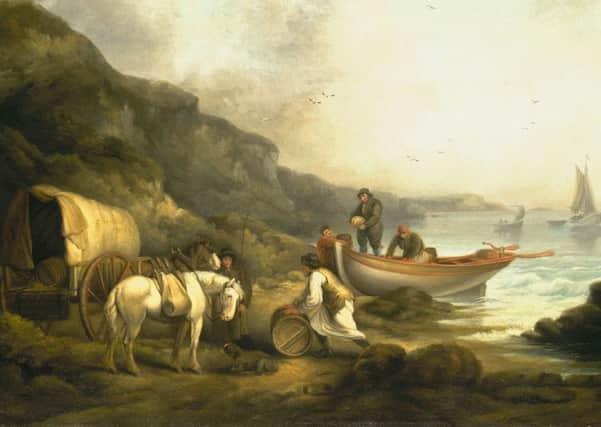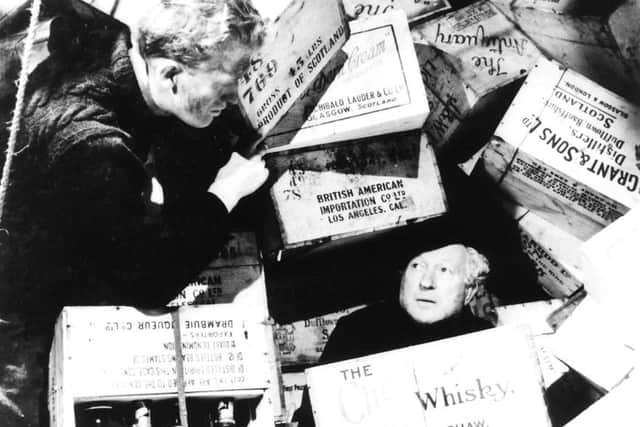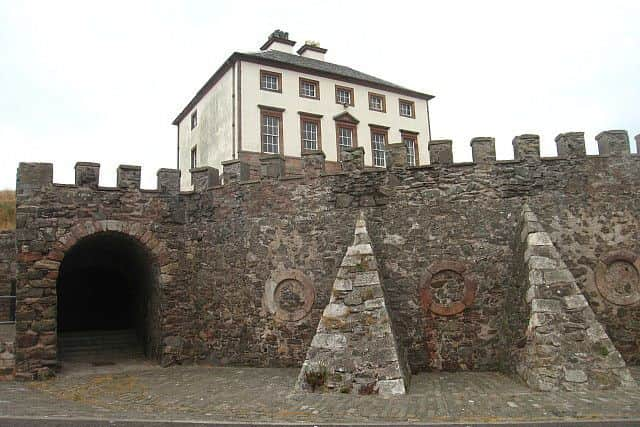The hidden history of smuggling in Scotland


Smuggling went hand in glove with Scotland’s centuries old import business, whether it be timber arriving from the Baltic states, salt from Carrickfergus in Northern Ireland or Brandy from the Netherlands.
But also driving the movement of contraband was Scotland’s homegrown whisky production. Not only did smuggling relate to the illegal import and export of goods - but also the illicit stilling of spirts which was viewed in some parts of the country as a unwavering and basic human right.
The dangers of being an excise man


Advertisement
Hide AdAdvertisement
Hide AdAs Walter Scott observed: “Smuggling was almost universal in Scotland for people unaccustomed to imposts and regarding them as an unjust aggression upon their ancient liberties; made no scruples to elude them where it was possible to do so.”
On Islay, the great whisky producing island, it is said that islanders erected a set of gallows at Bridgend to hang the first exciseman to come to shore at a time when the malt was being produced in great quantities in secret stills stashed in hollows and caves.
“The unfortunate man was rescued by an influential gentleman who provided a horse for him to escape to the nearest port,” according to David Caldwell, in his book Islay, the Land of the Lordship.


Much of the ‘moonlight’ was consumed locally but from Islay it was also sent to Argyll, Inverness-shire, Mull, Lewis, Galloway and Ireland.
Transporting the goods
In Richard Platt’s Smuggling in the British Isles, it is noted that other “illegal hooch” was moved south of the border in some “very odd containers.”


Belly canteens were used for the transport of spirits and held two gallons and offered a “convincing if somewhat rigid appearance of advanced pregnancy.”
Platt added: “Another container was made to look like a passenger riding pillion behind the horse-borne smuggler - a leather head made the illusion complete.”
Advertisement
Hide AdAdvertisement
Hide AdSolway Firth and Galloway is said to have provided some of the most active smuggling routes in the country, with the proximity to the English Border making it the stop-off of choice for those shifting illegal goods.
Much of the contraband was stored on the Isle of Man - which was independent during the 18th Century - and brought in fast moving smuggling fleets to the Scottish mainland.


Poet Robert Burns was amongst those trying to halt the free traders in the area after being appointed an excise man at Dumfries in 1791.
Punishing levies
Whisky and other commodities was first taxed in Scotland in 1644 to raise funds for its civil war effort against England but following the Act of Union in 1707 Scots were faced with even higher levies on some goods - up to seven times as much in some cases.
Taxes remained punitive throughout the 18th Century to boost funds to fight the ongoing stream of battles in France.
At one point, the cost of tea was made up of 70 per cent fee for the Exchequer.
The levies enhanced a new level of patriotism among Scots, according to Platt.


Advertisement
Hide AdAdvertisement
Hide Ad“Taxes were seen by Scots as oppressive and resistance to them positively patriotic,” he wrote.
Antagonism between the revenue men and the Scottish population often turned to violence, Platt also observed.
Perhaps the most famous example is the Porteous riots in Edinburgh, which were triggered by the execution of a smuggler, Andrew Wilson, in 1736.
The Clan system, the church, and Jacobite support also “further united” the population behind the smugglers and made it unlikely that a free trader would be found guilty in a jury trial, according to Platt.
The ‘clandestine trade’
Customs authorities struggled in places such as Montrose and Perth given Jacobite sympathies.
While the port at Montrose did an impressive legitimate trade in tobacco and corn, it also attracted large amounts of contraband goods which were either brought into the town following bribes at the quayside or dropped at various secluded, sandy bays up and down the coast.
The “clandestine trade of running brandy” from Dutch and Danish ships in the town to the “prejudice of the Revenue” was noted in the early 1700s.
Advertisement
Hide AdAdvertisement
Hide AdWhile some of the brandy, usually packed into small nine-gallon barrels called ankers, was taken to Montrose custom house and put under lock and key, a violent break in was recorded in 1709 when two guards were beaten by around 14 or 15 men and kidnapped before being bound and dumped on the town links.
Meanwhile, Eyemouth in Berwickshire has been described as the “smuggling tunnel capital” of Britain with the town riddled with passages to create a subterranean network for contraband flow.
Passages are said to flow from the quay into the town with Gunsgreen House, designed by Robert Adam, which was built for local merchant and notorious smuggler John Nisbet in 1753.
The house was specially adapted for his requirements. In the walls, an opening formed a shipway giving direct access to the sea so that illegal overseas deliveries could be received.
He made most of his money from tea with Gunsgreen Mansion fitted with a secret “tea chute” behind the walls.
As Platt observed: “Smugglers were inventive and ingenious in their choice of hiding places and concealed contraband beneath natural obstacles that they knew would fetter close investigation.”
Goods were often stashed in trap doors beneath fire grates, with a fire set to allude detection from the excise men. Holes in stable floors were also cut, with boisterous horses placed over the trap door to dissuade even the keenest of tax men.
DOWNLOAD THE SCOTSMAN APP ON ITUNES OR GOOGLE PLAY
